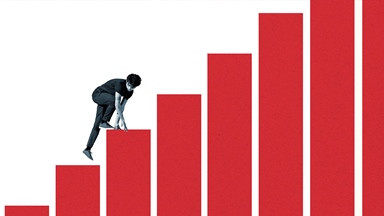Loading component...
At a glance
By Beth Wallace
Behavioural change is hard, according to research, especially when it comes to maintaining the change long-term. While people often try to implement a new habit, such as flossing their teeth or regular exercise, they can be derailed by lack of consistency and overambitious or vague goals.
Habit stacking is a behavioural change strategy that has been linked to sustainable habit forming. With habit stacking, people “stack” a new behaviour they are trying to adopt onto an existing habit, which helps them remember to do it.
Habit stacking has been popularised in recent years by habit experts such as BJ Fogg, founder of Stanford University’s Behavior Design Lab, James Clear, author of Atomic Habits (2018), and SJ Scott, author of Habit Stacking (2014).

Dr Gina Cleo, habit researcher and author of The Habit Revolution, says, “Habit stacking is a simple yet valuable tool for making positive lifestyle changes.
“By ‘piggybacking’ the new habit onto an existing one, you take advantage of the neural pathways and automaticity already associated with the existing habit. This makes it easier for your brain to adopt the new habit and increases the likelihood that you will repeat it.”
For example, if a person needs to remember to take medication every day, they could habit stack it to their morning coffee routine. To practise mindfulness, they could take five deep breaths before turning on their computer.
“When you put your head on your pillow at night, you could think of one thing you are grateful for,” Cleo says.
Choose the right cues
To get started with habit stacking, Cleo recommends defining a clear and specific goal. Then, choose a cue or trigger that naturally occurs before or after a habit that is already in place. Cues can include the time of day, location, preceding event/action, an emotion or a social situation.
“Make the cue obvious and easy to recognise,” she suggests. “When it comes to execution, keep the new habit simple and manageable. Gradually increase its complexity once it’s firmly established.”
"Make the cue obvious and easy to recognise. When it comes to execution, keep the new habit simple and manageable. Gradually increase its complexity once it has been firmly established."
While the location and time for performing the new behaviour will be determined by the cue, it is important to consider whether it provides the appropriate setting, says organisational psychologist Dr Michelle Pizer.
“For example, first or last thing in the day can be easier than the middle of the day, unless you have a predictable job,” Pizer adds.
Likewise, the cue should occur at the same frequency as the desired behaviour. “If I set a goal to do some stretches every time a meeting finishes, it’s not going to be a particularly effective habit stack unless I have regular meetings,” Pizer explains.
Can behavioural economics really change habits?
Habits that stick
There are many ways to use habit stacking at work to improve productivity, nurture relationships and deliver a number of other benefits, Cleo says. “For example, check emails after your morning coffee, create meeting agendas when scheduling meetings, or plan the next day when you finish work.”
Habit stacking can also support continuous professional development.
Pizer recalls a former colleague who would select an article at the end of each day to read the following morning. “They would put it on their desk or their chair – somewhere they couldn’t ignore it,” she says. “Their day always started with something that interested them, which related to skills or knowledge they wanted to build.”
Preparing the environment in this way increases the likelihood that people will perform the new behaviour, Pizer adds. “It’s like putting floss next to your toothbrush or laying gym clothes out the night before a workout,” she says. “Everything is there, so you don’t forget to do it.”
Celebrate success
Another way to incorporate habit stacking at work is to make use of “doorway moments”, Pizer says. Before going into a meeting, take a deep breath and ask, “‘What’s my ideal outcome?
How do I want to show up?’ You can make this a habit any time you go into a physical or virtual room to help you focus on the person you’re with and be fully present,” Pizer explains.
Meetings provide numerous opportunities for habit stacking. “To build connections between teams, every meeting could start with participants sharing one good thing that happened to them that week or you could end meetings with a question, such as, ‘What’s your key takeaway?’”
In all these scenarios, Cleo says, rewards will play a vital role in making the new habit “stick”.
“A reward can be a mental high-five, a reflective moment to acknowledge your effort, or a tick on a habit tracker,” Cleo explains.
“Make sure you celebrate, in some way, every time you complete the new habit.”

